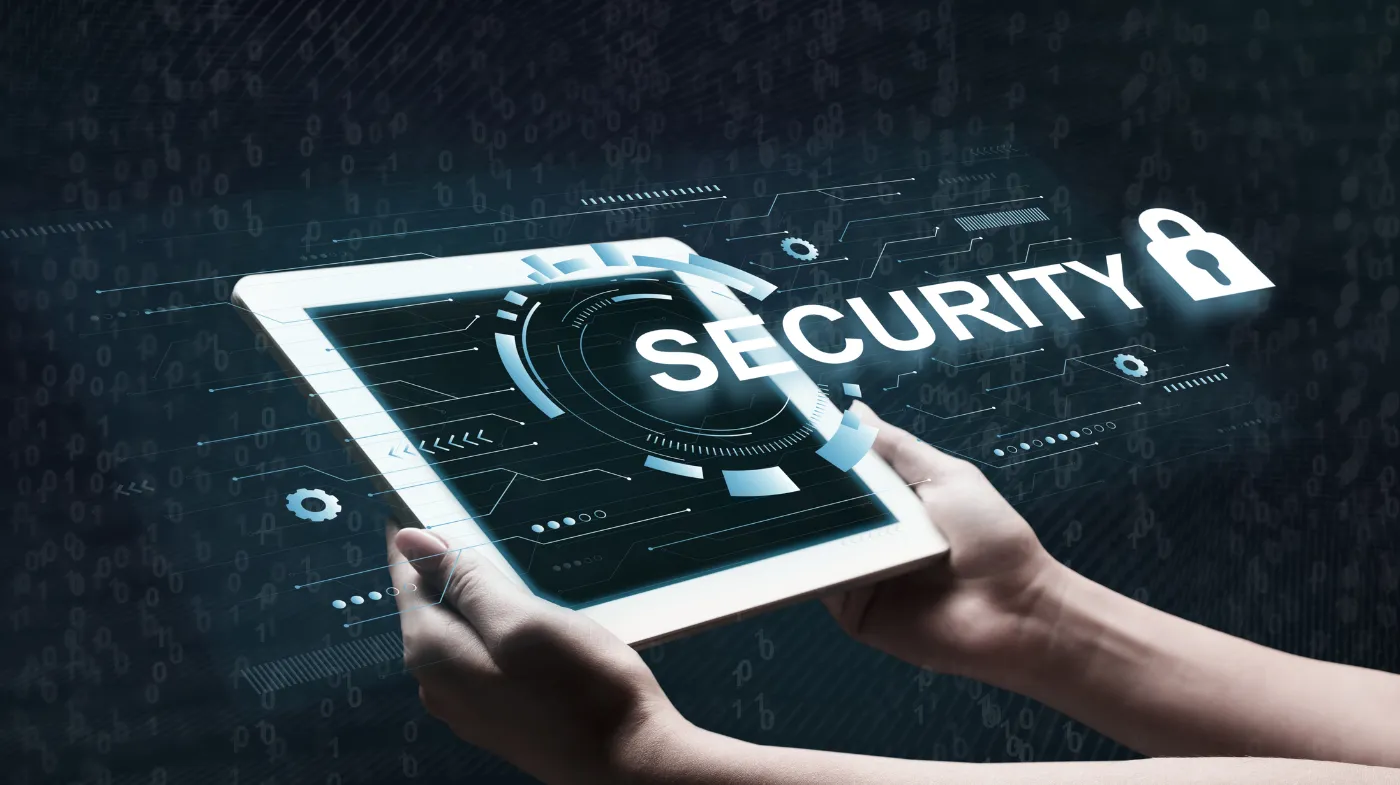
Cybersecurity is more than just a one-time action; it’s a continual process of keeping your digital assets safe.
Building a cybersecurity routine involves conducting a comprehensive risk assessment to identify what valuable assets need protection and evaluating potential threats. By understanding these risks, you can prioritize where to focus your cybersecurity efforts.
Another essential component is implementing strong access controls. Creating complex passwords for each account and enabling multi-factor authentication ensures unauthorized users can’t easily access your sensitive data.
A free strong password generator can be helpful in creating unique, secure passwords for every platform you use. In this guide, we will discuss all the critical steps you need to follow to maintain a secure digital environment.
Essential Steps to Building a Strong Cybersecurity Routine
To establish a robust cybersecurity routine, you need to follow these key steps below:
Conduct a Comprehensive Risk Assessment
When you begin building a robust cybersecurity routine, conducting a thorough risk assessment is essential, as it lays the foundation for effective protection.
Start by identifying your valuable digital assets, such as personal data, work documents, and financial records. Next, analyze potential threats that could compromise these assets, including malware, phishing attacks, or insider threats.
Evaluate the possible impact of a breach by considering factors like data loss, financial repercussions, and reputational damage. This extensive risk analysis will help you prioritize your cybersecurity measures, allowing you to allocate resources effectively and focus on the most critical areas.
Implement Strong Access Controls
Implementing strong access controls is essential for maintaining the integrity of your sensitive data, especially as cyber threats continue to evolve.
Start by utilizing complex passwords for each account; avoid simple or reused passwords that hackers can easily exploit. Opt for lengthy passwords incorporating uppercase and lowercase letters, numbers, and special characters. If managing multiple passwords seems overwhelming, leverage a secure password generator to create unique credentials.
Additionally, enable Multi-Factor Authentication (MFA) for an added layer of security---this could involve a code sent to your phone.
For organizations, implement Role-Based Access Control (RBAC), ensuring that individuals only access information pertinent to their roles, further minimizing the risk of unauthorized access and data breaches.
Practice Cyber Hygiene
Practicing good cyber hygiene is essential for maintaining a robust cybersecurity posture, as even the most advanced defenses can falter without consistent upkeep.
Regularly updating your software, including your operating systems and antivirus programs, is crucial to fix vulnerabilities that attackers can exploit. This proactive measure greatly reduces your risk of falling victim to cyber threats.
Next, exercise caution with links and attachments; phishing schemes are rampant, and clicking on suspicious content can lead to data breaches. Always verify sources before engaging with such materials.
Lastly, implement a routine for backing up your data. Regular backups safeguard your critical information against potential loss from cyber attacks or technical failures, ensuring you can recover swiftly and effectively when incidents occur.
To further strengthen your defenses, consider using a password vulnerability scanner to identify weak or compromised passwords across your accounts, reducing the chances of unauthorized access.
Foster a Security-Aware Culture
For any organization, fostering a security-aware culture is crucial, as the best technology can still fail without the right human practices to support it.
Security isn’t just about tools; it’s about the people who interact with them. Make sure everyone understands cybersecurity best practices through regular training sessions.
Focus on identifying phishing emails, crafting strong passwords, and safe browsing techniques. This knowledge empowers your team to act confidently against threats.
Additionally, promote open communication by encouraging team members to report suspicious activities immediately. The quicker an issue is identified, the faster it can be addressed, minimizing potential damage.
Utilize Security Tools
While your organization’s commitment to cybersecurity is essential, it’s equally important to leverage advanced security tools that strengthen your defenses.
Firewalls are critical; they monitor network traffic and block potentially harmful connections before they breach your system.
Invest in reliable antivirus software that scans for malware, removing threats before they cause damage.
Additionally, encrypt sensitive files to render them unreadable without the proper decryption key, effectively preventing unauthorized access if data is compromised.
Implementing Security Information and Event Management (SIEM) systems enhances your threat detection capabilities by collecting and analyzing data from various sources.
Don’t forget to use a trusted and reliable password manager to safely store and organize your complex passwords, ensuring they’re accessible only to you while reducing the risk of breaches caused by weak or reused credentials.
Document and Review Your Strategy
Integrating advanced security tools into your cybersecurity framework lays the groundwork for a robust defense, but without a well-documented strategy, those tools may not be utilized effectively.
Start by clearly documenting your cybersecurity plan, specifying policies, procedures, and assigning roles to ensure everyone understands their responsibilities. This clarity is essential during security incidents, where swift action is necessary.
Moreover, regularly review your strategy to adapt to the ever-evolving threat landscape. Schedule these reviews to incorporate new risks and technological changes, making certain your defenses remain relevant.
Monitor and Respond to Threats
Effective threat monitoring is essential for maintaining a secure environment. You can’t rely solely on prevention; continuous surveillance of your system is critical to detect potential breaches.
Implement real-time monitoring tools that analyze network traffic, system logs, and user behavior for any anomalies. This proactive approach allows you to identify threats before they escalate.
Moreover, an incident response plan is significant. If a breach occurs, you need to act swiftly. Your plan should detail immediate steps to contain the threat, including isolating affected systems, notifying impacted users, and restoring the integrity of your environment.
What should you do if you suspect your account has been hacked?

If you believe your account has been compromised, act immediately. Change your password right away, ensuring it’s unique and complex. Create a strong and random password using a reliable tool to enhance your security. Don’t forget to update passwords for any other accounts using the same credentials, as one breach can quickly lead to others.
Enable multi-factor authentication (MFA) to fortify your account’s security. This adds an extra layer of protection against unauthorized access.
Then, review your account activity meticulously; look for any unauthorized actions or unfamiliar logins. Document any suspicious findings.
Finally, alert your contacts, especially if the breach involves email or messaging platforms, as they might receive phishing attempts from your compromised account.
Should you trust security software from free sources?
When considering whether to trust security software from free sources, you might wonder about the potential trade-offs involved. While free solutions can be appealing, they often come with significant limitations. Many lack thorough protection, leaving you vulnerable to cyber threats.
Additionally, free software may not receive regular updates, which are vital for defending against emerging threats. Premium options typically offer enhanced features, ongoing support, and timely updates that bolster your security posture.
What role does employee training play in a cybersecurity routine?
Although technology plays an essential role in cybersecurity, the human element remains a critical factor in defending against threats.
Employee training is vital, as individuals often represent the weakest link in security protocols. Regular training sessions focused on the latest phishing scams, password management, and secure practices can greatly mitigate risks.
When employees understand the tactics employed by cybercriminals, they’re more likely to recognize and report suspicious activity. Additionally, fostering a culture of cybersecurity awareness encourages proactive behavior, ensuring that all team members know the protocols to follow during a potential breach.
Investing in employee training strengthens your organization’s overall security posture and creates a vigilant workforce capable of defending against ever-evolving cyber threats.
Build Your Cybersecurity Shield Before It’s Too Late
Neglecting cybersecurity in today’s digital age is equivalent to leaving your front door wide open for anyone to walk in. By implementing a strong cybersecurity routine, you not only protect your valuable assets but also foster a culture of vigilance within your organization.
Remember, every step you take --- from risk assessments to employee training --- fortifies your defenses against evolving threats. Stay proactive, remain informed, and watch as your cybersecurity strategy transforms from a mere necessity into a formidable barrier against potential attacks.
